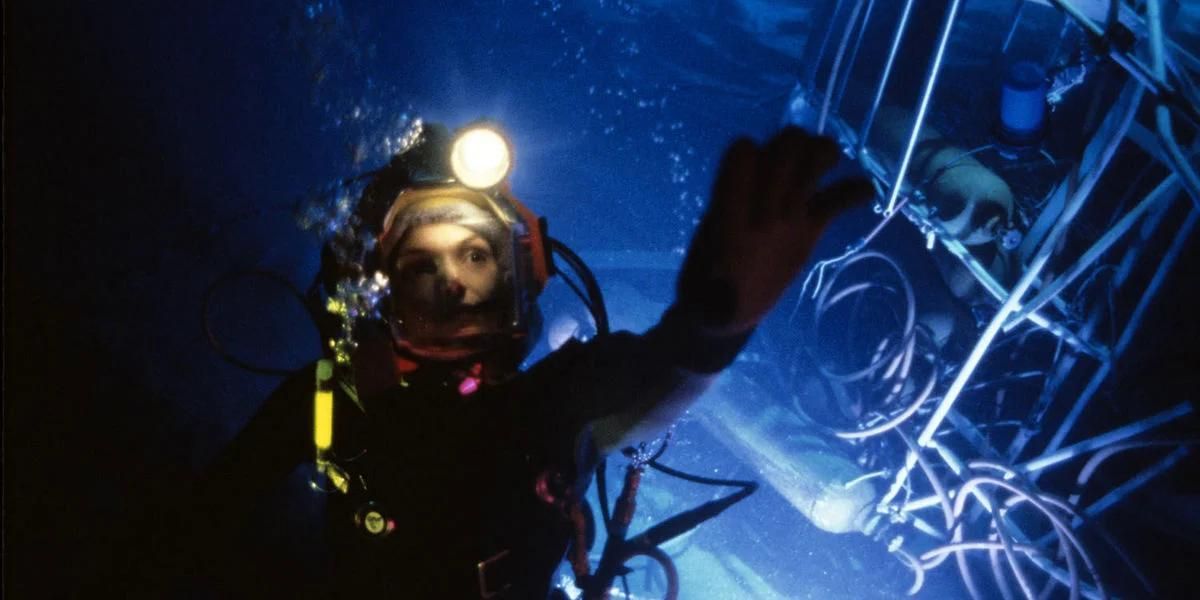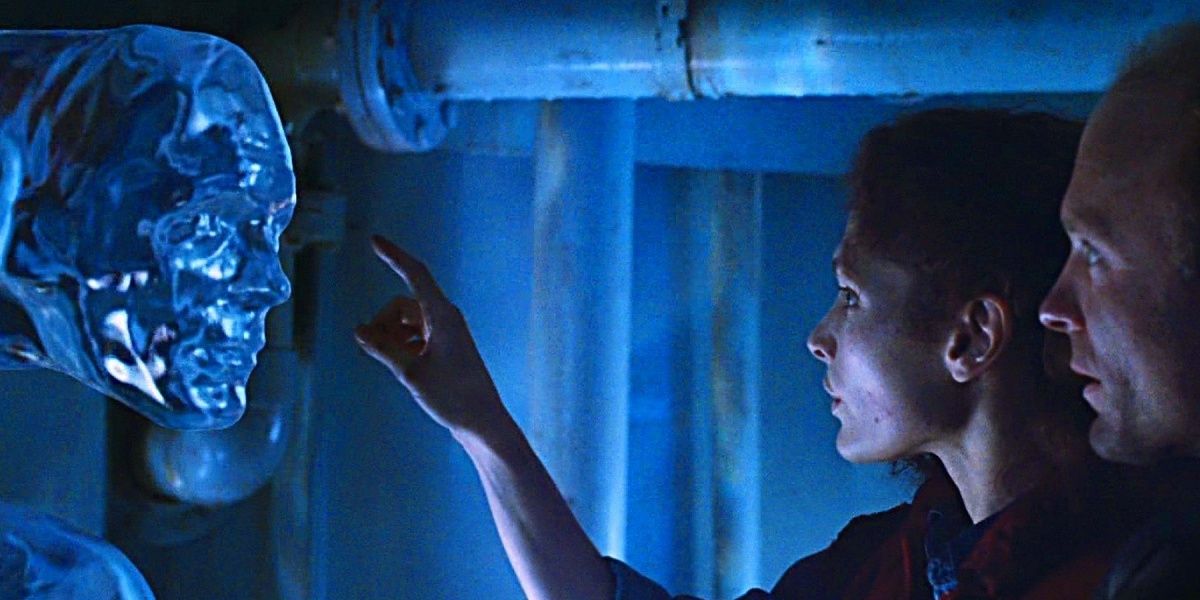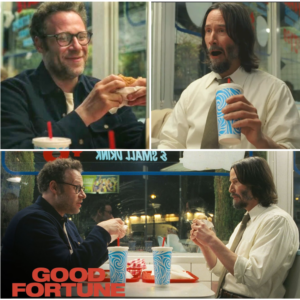Near drownings and electrical storms plagued Cameron’s sci-fi adventure film.
James Cameron has always prided himself on being a filmmaking trailblazer. His breakout hit The Terminator and widely successful movies like Aliens show he’s always tinkering with the newest technology and movie effects. He was looking to continue with that pioneering attitude when he took on the 1989 maritime thriller The Abyss starring Ed Harris and Mary Elizabeth Mastrantonio. The story is about a crew of underwater oil drillers who come across a dazzling alien species during a Navy rescue. The setting and creating a new reality are always key to Cameron’s filming technique, and The Abyss was no different. He decided to have his cast and crew descend upon an old, abandoned nuclear power plant in rural Gaffney, South Carolina for the principal photography. It was a choice that nearly killed not only Cameron but also members of his cast.
James Cameron Nearly Drowned While Making ‘The Abyss’
Cameron has spoken openly about the dangers he encountered while filming The Abyss. In a 2009 piece for the Los Angeles Times, he recounted how he had a near-death experience trying to get the best shots for the film that he could. The thrill-seeking, innovative filmmaker talked about almost drowning in the 35-foot deep water tanks that held 7.5 million gallons of water. For whatever reason, Cameron decided to eschew the underwater safety divers known as “angels” whose sole purpose was to aid any distressed cast and crew. He went down with 40 pounds of weight strapped to his body to be steady for shooting. It was a terrible idea and nearly killed the acclaimed director.
Only days into the production, Cameron was working with his leading lady, Mary Elizabeth Mastrantonio, when he took a breath and got no air. He immediately checked his pressure gauge and saw that it read “zero”, meaning he was completely out of oxygen. Cameron recalls telling the head of the diving safety crew, Al Giddings, “Al…Al…I’m in trouble.” He was in a lot of trouble because he was weighted down and wasn’t wearing any fins, making a swim to the surface almost impossible.
James Cameron Accidentally Punched a Safety Diver While Making ‘The Abyss’

We all know that when you feel like you are going to drown, it’s nearly impossible not to panic. Our survival instinct kicks in, and it’s almost as if we have no control over our actions. When Cameron began to panic, thinking he was going to die. In a piece for People he recounted the horror, “When the tank gets low, you get a warning that you’re about to run out of air,” he said. “Well, this thing had a piston servo regulator in it, so it was one breath… and then nothing. Everybody’s setting lights and nobody’s watching me. I’m trying to get [underwater director of photography] Al Giddings’s attention on the p.a. but Al had been involved in a diving accident, and he blew out both eardrums, so he was deaf as a post, and I’m wasting my last breath of air on an underwater p.a. system going ‘Al… Al…’ and he’s working away with his back to me.” he motioned for help, but alone at the bottom of such an enormous tank, there was no response.
He quickly performed what is known as a “blow and go”, which is the process of dropping your heavy diving gear and making a mad dash for the surface. He was on his way when he was stopped by a diving safety member who did as he was trained to do, which was hold Cameron and insert a breather into the panicked director’s mouth. The dramatic pressure variation could also have been deadly if Cameron ascended too quickly. But there was a problem. Cameron states that he took a breath from the mouthpiece and only got more water. At this point, he is panicked to the point that he has almost no control over his actions, saying, “At that point, it was almost check out point and the safety divers were taught to hold you down, so you don’t embolize and let your lungs overexpand going up. But I knew what I was doing. And he wouldn’t let me go, and I had no way to tell him the regulator wasn’t working. So I punched him in the face and swam to the surface and therefore survived.” It’s surreal to think of a parallel universe in which a young, promising director like Cameron dies on the set of The Abyss in 1989, and we never see the game-changing films he has delivered since.
Ed Harris Also Had a Near-Death Experience While Shooting ‘The Abyss’

It wasn’t just Cameron who stared death in the face during the dangerous filming of The Abyss. Leading man Ed Harris also had a near-death experience during the shoot as well. For those familiar with the film, Harris’s character “Bud” makes a dangerous descent to the bottom of the ocean toward the end of The Abyss to make contact with the alien species. But the only way he can sustain such a dive is to learn how to inhale and breathe a hydro-fluid that will allow him to essentially breathe water. It’s the climax of the movie and Harris really delivers in the harrowing sequence, but he probably wouldn’t do it again. He had to pretend that he could breathe water while also being 30 feet beneath the tank’s surface. He spoke about how he nearly drowned in the process, “I really thought was going to die for a second. And it also pissed me off that I was afraid of that – that I got scared of that for a second.”
He also told Entertainment Weekly about the difficulty of the underwater shoot, “We were guinea pigs, in a way, Jim wasn’t quite sure how this was all gonna go down… [in the drowning scene I was] screaming at her (Mastrantonio) to come back and wake up, and I was slapping her across the face and I see that they’ve run out of film in the camera – there’s a light on the camera – and nobody had said anything. And Mary Elizabeth stood up and said, ‘We are not animals!” and walked off the set. They were going to let me just keep slapping her around!… It was very difficult, but it was worth it, I met some great people. The Abyss is a really great movie up until the last 10 minutes, which was the big disappointment.” Harris also said in the 2016 interview that despite the perilous shooting environment, he bears no ill will toward Cameron, saying, “I like Jim. He’s an incredibly talented, intelligent guy. In subsequent years after filming, it was always good to see him.”
There Was Another Danger That Added to the Stress of Making ‘The Abyss’

The Abyss features the first instance of photorealistic fluid morphing, and it has some resplendently wondrous shots of a bioluminescent alien species. He spoke about the revolutionary aspect of the film, “The pseudopod scene is the moment that certainly caught people’s attention at the time. That scene made an impact and showed people what was possible, and I think it kicked in the door to the start of the CG explosion.” Nonetheless, Cameron looks back at the project as a failure in his decorated career. He feels like he left a lot on the table and could have made a better film, but also acknowledges that he could never have gone on to make the brilliant 1997 maritime classic Titanic had he not been through the mess that was the making of The Abyss. When you add in his most recent blockbuster, Avatar: The Way of Water, it’s clear there is something that draws the brilliant director to watery shoots.



